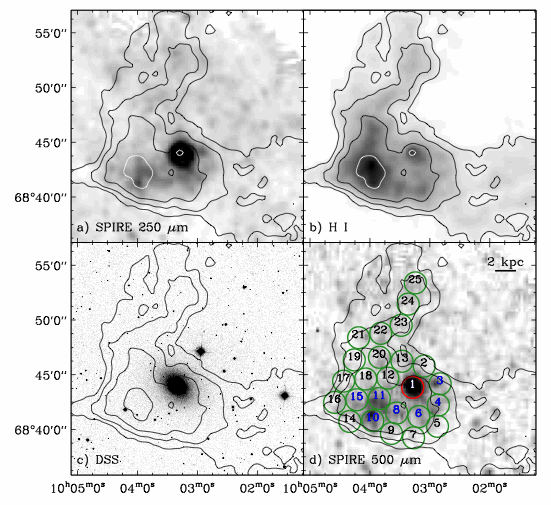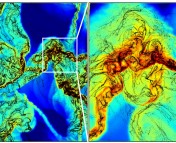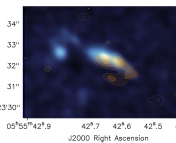Introduction
M 81, M 82, and NGC 3077 are the most prominent members of the nearest group of interacting galaxies. Many authors have worked on deciphering the gas features which surround the M 81 triplet. Filamentary structures connect the three galaxies; these tidally-created features are predominantly neutral hydrogen (H I), but also contain molecular gases and are regions of active star formation.
Methods
In this work, the authors report on their detection of cold dust in the tidal streams near NGC 3077. They use ESA’s Herschel space telescope to carry out observations in three bands in the infrared: 250, 350 and 500 μm. The figure below shows their images of NGC 3077 (panel b is from a previous paper). The galaxy itself is the brightest object and can be seen as a dark ellipse in panels a, c and d (in panel d it is circled in red). The remaining features are the M 81 tidal system; the green circles are the 1 arcsec apertures–corresponding to radii of about 1 kpc at these distances–used to quantify dust properties. The authors calculate the flux in each of the 25 apertures, and compare to apertures of the same size, taken of the background.

NGC 3077 in a variety of ways. The dark ellipse seen in panels a, c and d is the galaxy; the remainder is the tidal feature.
Results
The authors detect significant amounts of dust in 8 of the apertures, and averaging the remaining apertures also results in a statistical detection. The correlation between the H I emission and dust implies that the dust is part of the M 81 tidal structure and not something that got in the way. In infrared images of this region, one can see filaments of the Galactic Cirrus–gas and dust that are part of our own galaxy–so this was a definite concern.
Using the fluxes in each of the three bands, the authors determine the mass surface density of dust in the tidal arm. At , the tidal features weight in at about 10 times the dust mass of the galaxy NGC 3077 itself. Moreover, star formation (at the current rate, at least) would not have created this amount of dust and cannot have resulted in the high metallicities observed. From this, the authors conclude that the material which makes up the tidal feature was enriched with heavy elements, dust and gas prior to its formation. Likely, the material originated in NGC 3077, which has a similar metallicity, and was removed from the galaxy by tidal interactions with other objects in the M 81 group.
This analysis shows that tidal interactions can have a significant influence on the evolution of both the galaxy and the intergalactic medium.





Trackbacks/Pingbacks